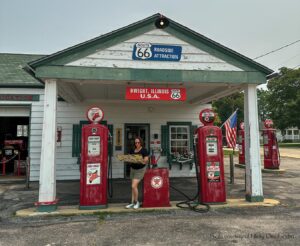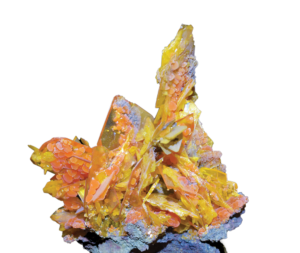Thanksgiving week marked my first anniversary as Chief Executive Officer of the Prairie State Energy Campus. My personal philosophy and the philosophy I use to lead the Prairie State team is simple: I want the place where I live, work and worship to be better tomorrow than it is today. Success in my job is to provide the rural electric cooperatives and municipalities that own Prairie State with reliable, affordable energy in a manner that adds value to the communities we serve.
Each day more than 600 people come to work at Prairie State. These people mine coal safely and productively, operate heavy equipment, operate and maintain the largest power plant built in the U.S. since 1982, and provide financial, information technology, human resources and engineering support to assure a safe and efficient operation. Our workforce and leadership team is made up of the brightest, most dedicated, and competent people I have worked with in my 36 years in the energy industry. We are focused on ensuring a safe work environment, pristine regulatory compliance, decisions to protect your plant and coal mine for the long term, and keeping costs to an absolute minimum.
Prairie State’s economic impact on the southern Illinois region is more than $785 million annually, based on a study performed by the University of Illinois. Our basic function is to extract one of southern Illinois’ most abundant natural resources, coal, convert it to energy, and provide that energy to our member-owners in a safe and environmentally responsible manner. The energy produced at Prairie State serves 2.5 million households across eight states, with 60 percent of the energy produced being exported outside of Illinois. It helps provide funding for the salaries of our southern Illinois employees, contractors and businesses that support our operation, and the taxes that aid local schools and governments.
I believe Prairie State is well-positioned for a sustainable and secure future as one of the nation’s premier coal plants. The campus was commissioned in 2012 during the Obama administration, under some of the toughest environmental and safety requirements ever made for a coal-fired power plant and coal mine, and I am proud to say that we are compliant with every one.
Several months ago I met with Joe Goffman, Senior Council for Climate at the U.S. Environmental Protection Agency (EPA), in Washington, D.C. Mr. Goffman told me that he viewed Prairie State as the “poster child” for how U.S. coal plants can and should operate in the future. Our emission profile is among the best in the United States and we are the best of any coal plant in Illinois. Our carbon dioxide emission rate is more than eight percent below the next best Illinois coal plant.
In 2015, the Prairie State team set a number of records for the facility. During the summer generation period we had the highest availability, over 93 percent, and lowest forced outage rate in our station’s history. The mine production is more than 30 percent better than any prior year. Our production expense is among the lowest for U.S. coal-fired power plants, and we are also on track to have the highest annual generation, highest coal production, and lowest forced outage rate in the history of the facility. Most importantly, we are achieving all of this while maintaining our employees’ safety as well as strict regulatory compliance.
Last year we also marked the initiation of our campus sustainability program, focused on recycling and beneficially using all waste products. Thus far, we have recycled or beneficially used 17,000 tons of gypsum, 8,400 gallons of oil, 168,000 pounds of single-stream recycling, and 986 pounds of batteries. We have also begun to recycle fly ash for use in concrete for roads and building construction, and have reused over 176,000 tons to date.
Prairie State will continue to provide affordable, reliable energy, and job opportunities for the brightest minds in the decades to come.








